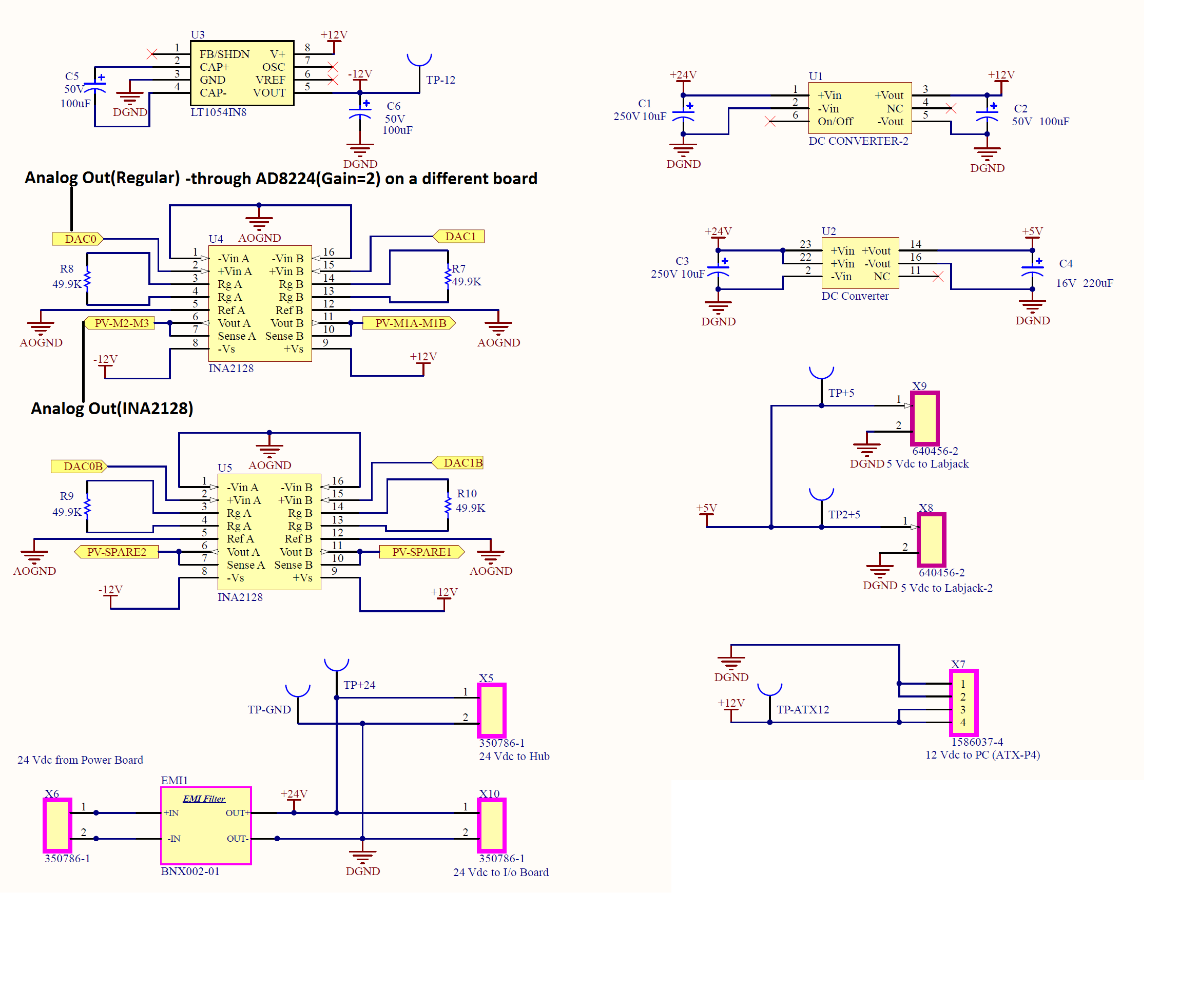Hello,
I'm using INA2128 Instrumentation amplifier for Analog Out amplification(Gain=2). I'm testing the amplifier circuit for frequency response and response time using a recording tool. Below is the graph for comparison between Analog Out before and after the Amplifier circuit. It seems like the Amplifier out is not averaging at higher frequencies for some reason and there is an attenuation issue, is this because of some filtration or aliasing? I can provide the schematics as needed.
Please help me understand the issue and what would be a fix for this kind of behavior.
Thanks,
Naveen.


